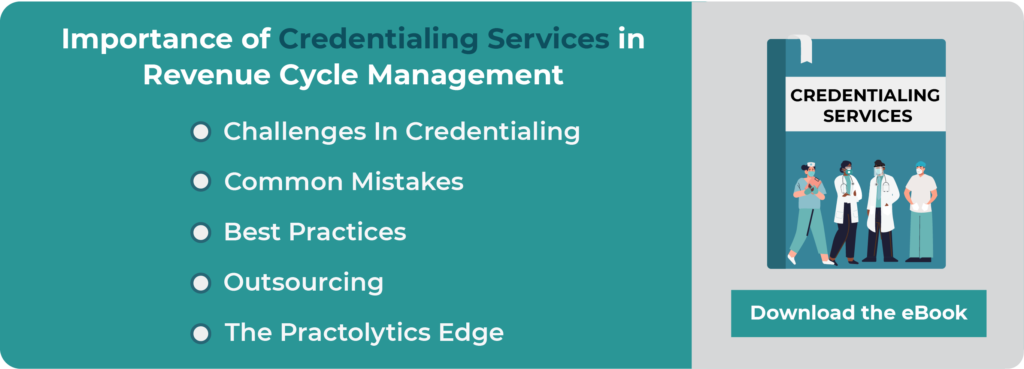Lag Days – Why this is an Important Metric to Track for Practice Owners
Healthcare facilities require a number of things to run successfully, primary among which is finance. However, financial returns are routinely affected by the period between the date of service and the submission of a claim. These periods are called lag days.
This article will explore the importance of lag days, processes in medical billing and ways to reduce lag days for better financial yields.
Table of Contents
Lag Days As An Important Metric for Providers to Track
Lag days are critical determinants of revenue inflow. And it is ideal that staff enter their charges within 24 hours from the date of service to ensure efficiency. When lag extends over a number of days from the encounter, recovering payments from a clearinghouse accordingly takes longer. For instance, a 3-day lapse between the time a patient was examined and submission of a claim, means that payment will take longer, especially when a review is requested by the insurance company. The center may not only be underpaid due to time lapse but also have its claim denied if the insurance provider has a set period for filing claims.
Additionally, lag days create difficulty in predicting inflows. Because reimbursements now have no specific timeline, outlining expected revenue for an earning period becomes challenging. Despite these, many providers face the challenge of lag days. In a 2019 survey, 35% of the respondents stated that 3-7 days elapse between charge capture and claim submission. This problem is mainly due to internal processes such as delays in the documentation of charges by medical personnel and delays in submitting claims. It is therefore important to examine processes in medical billing to help you optimize them at your facility.
Processes in Medical Billing
Patient Check-in
At the first point of contact, it is important that data such as the patient’s demography, details such as their insurance policy and payer and any other information that is deemed necessary for a claim are documented.
Verification of the Patient’s Insurance Status
Verifying a patient’s insurance eligibility is key to preventing glitches. As insurance details can change at any period, it is important to run the same process for regular patients.
Accurate Medical Coding
The gold standard of medical coding is an accurate report of all procedures involved. This implies that the correct codes must be used to capture treatments. Similarly, staff must take care to fill codes correctly to avoid issues such as underpayment for a treatment or even damaging charges for healthcare fraud. Entering the right codes will ensure the center is duly reimbursed.
Charge Entry
This is essentially a record of all the services provided. It includes documenting each procedure or treatment method under the appropriate code.
Submitting Claims
Following the processes above, the claim must be submitted to the payer. However, it is essential that medical billers have necessary details on the insurance company. Payers may observe different methods for receiving claims and it is important that centers understand these processes before submission.
Posting
This is the final step. Here, the provider is either fully reimbursed or partly owed.
How to Reduce Lag Days
Reducing lag days mostly requires a review of your internal processes. Below are some important methods:
Harness Technological Potentials
Technology can optimize the process of submitting claims. Using an Electronic Health Record or Practice Management Software will not only enhance submissions but other procedures too. Exploring software options can aid in scheduling appointments, documenting visits and keeping important patient data, such as their insurance status, updated. You can also avoid claim denials due to errors in documentation.
In addition to this, your center could utilize an online payments option to create ease in making payments. Through this, patients can determine treatment costs and pay bills before visiting the facility.
Automation of Billing Processes
Automating routine steps in billing can save time and increase efficiency. This helps to avoid denial due to untimely claim submissions. Leveraging EHR and Practice Management Software, medical billing staff can be freer to engage complications in filed claims.
Follow up on Denied Claims
It is not unusual for practices to encounter claim denials. An estimate however suggests that as much as fifty percent of these claims are never revisited. To avoid losing substantial revenue, medical billing staff should reexamine claim denials for resolution. Often, payers deny claims due to errors in the submission.
Build an Efficient Team
Having an experienced caliber of medical billing specialists can greatly improve processes. If your specialists are versed in using EHR and other software, you can have a smooth workflow with reduced challenges in claim submissions.
Similarly, front desk personnel play an important role in your practice’s revenues. Documentation of patient demographics and insurance details will remove issues in filing successful claims. They can also help to update insurance information and collect balances such as coinsurance and deductibles ahead of time.
In like manner, healthcare providers are strategic in the sense that prompt and accurate documentation of codes will save submission time. Providers trained in the use of relevant software are a plus and where this is not the case, training sessions should be held to improve capabilities.
Regularly Review Processes
The healthcare system is a continually evolving arena. And to keep up with trends, practices must enhance their methods. Your center can do this by having reports on financial and administrative processes. This will enable you to identify drawbacks in the system. Your staff should also be encouraged to table growth ideas.
Conclusion
In this article, we have explored lag days, why they occur, and their ultimate importance to your practice’s financial health. We have also looked at processes you can adopt to improve medical billing at your facility. However, a facet we must emphasize is that lag days are a product of internal occurrences which are viewed as normal. And to ramp up revenue and record successful claims, a review is necessary.
ALSO READ – Key Things To Consider While Negotiating Medical Insurance Contracts
Talk to Medical Billing Expert Today — Get a Free Demo Now!







